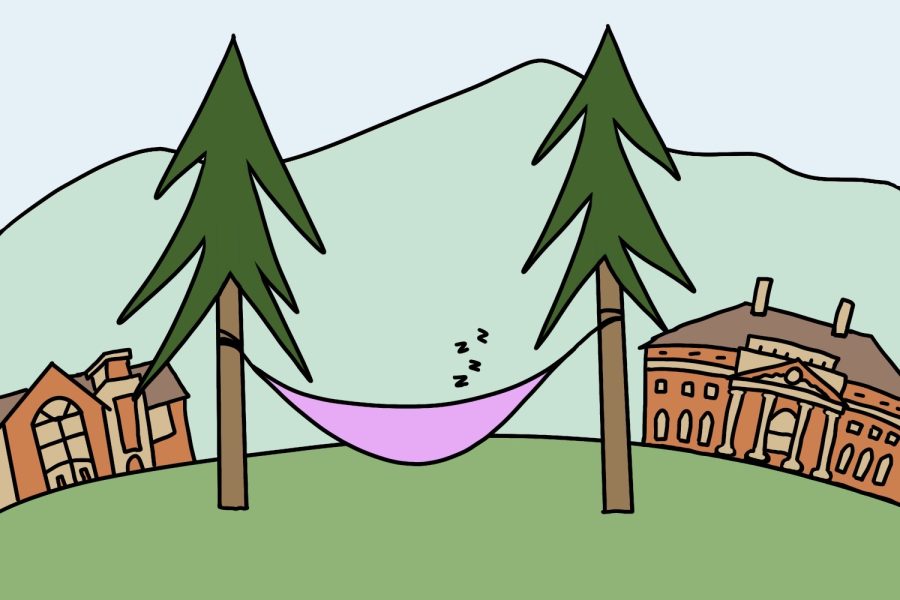Hammocking can damage UVM’s trees
March 24, 2022
Students set up their hammocks and lounge all over UVM campus, but hammocking causes major issues people don’t think about when setting up.
Hammocks can cause massive harm to trees.
Wrapping the straps around the trees can damage the bark which keeps the tree safe from weather and insects, according to the Washington University in St. Louis Hanging Hammocks webpage.
Bark damage gives insects and parasites a clear passage into the tree, which can lead to tree decay.
Without proper bark coverage, the tree is vulnerable to fire, wind and other weather, according to the webpage.
Tying a rope or cord to the tree can also be very detrimental to wood health as it traps and chokes the tree, according to the webpage.
The rope pinches off water and nutrient supply to the top of the tree leaving it more susceptible to insects and disease, according to the webpage.
If a tree is too young or small, the weight of an occupied hammock can be enough to break the sapling or even uproot small trees, according to the webpage.
Hammocking can be so harmful to trees that some universities, such as California Polytechnic State University, banned setting up hammocks using trees on college grounds, according to an Oct. 31, 2015 Mustang News article.
CalPoly University planned on putting in designated poles for hammockers around campus so students can hammock safely without hurting trees or other vegetation, according to the article.
Hammocks themselves can also be a pain for students moving around campus. Inconsiderate hammockers may set up in a way that blocks paths, shortcuts or views of parks and green spaces.
This can make a day on the UVM green less enjoyable.
There are ways to safely hammock without hurting trees.
Fort Collins, Colorado updated their hammocking guidelines summer 2021 to require padding on the ropes of hammocks to prevent damage to urban forests while also appeasing avid hammockers who were upset by the hammocking ban, according to a July 6, 2021 Coloradoan article.
Using nylon straps at least two inches wide, making sure a tree is healthy and of proper size and not physically shaking the tree while setting up the hammock are all good ways to help keep trees safe and healthy, according to WashU.
UVM students should follow these guidelines and hammock in a tree-safe way.
Outdoor gear company Leave No Trace sells proper hammock straps specifically designed not to cause harm to trees.
Their website also provides steps for properly setting up hammocks and what to look for beforehand.
Outdoor Gear Exchange, which has a store on Church Street, also sells straps that do not harm trees.
Students should go to these stores to get hammock supplies.
Hammocking is a great way to spend a warm sunny day, as long as students keep in mind the trees need to keep enjoying their sunny days without being hurt.
